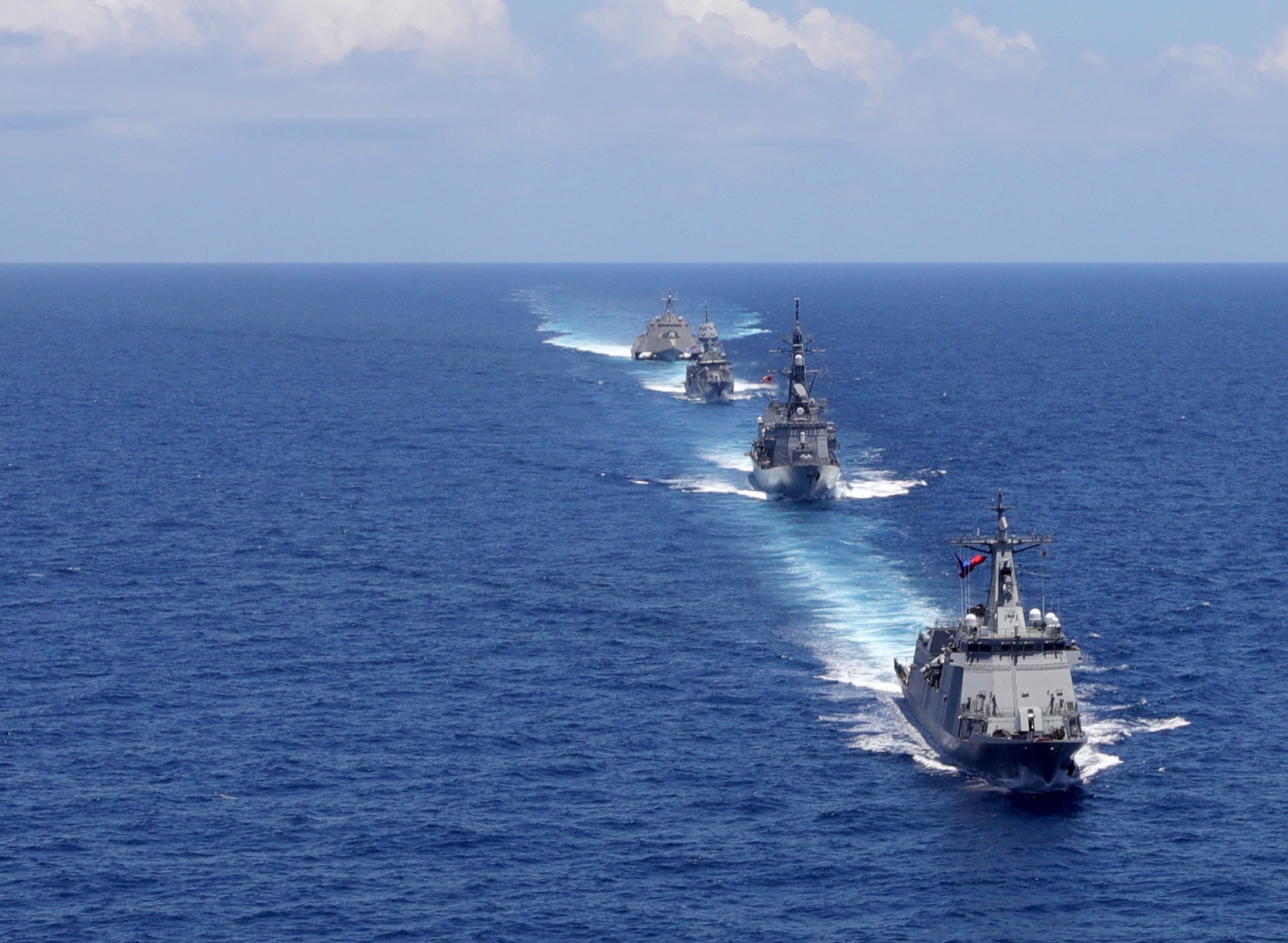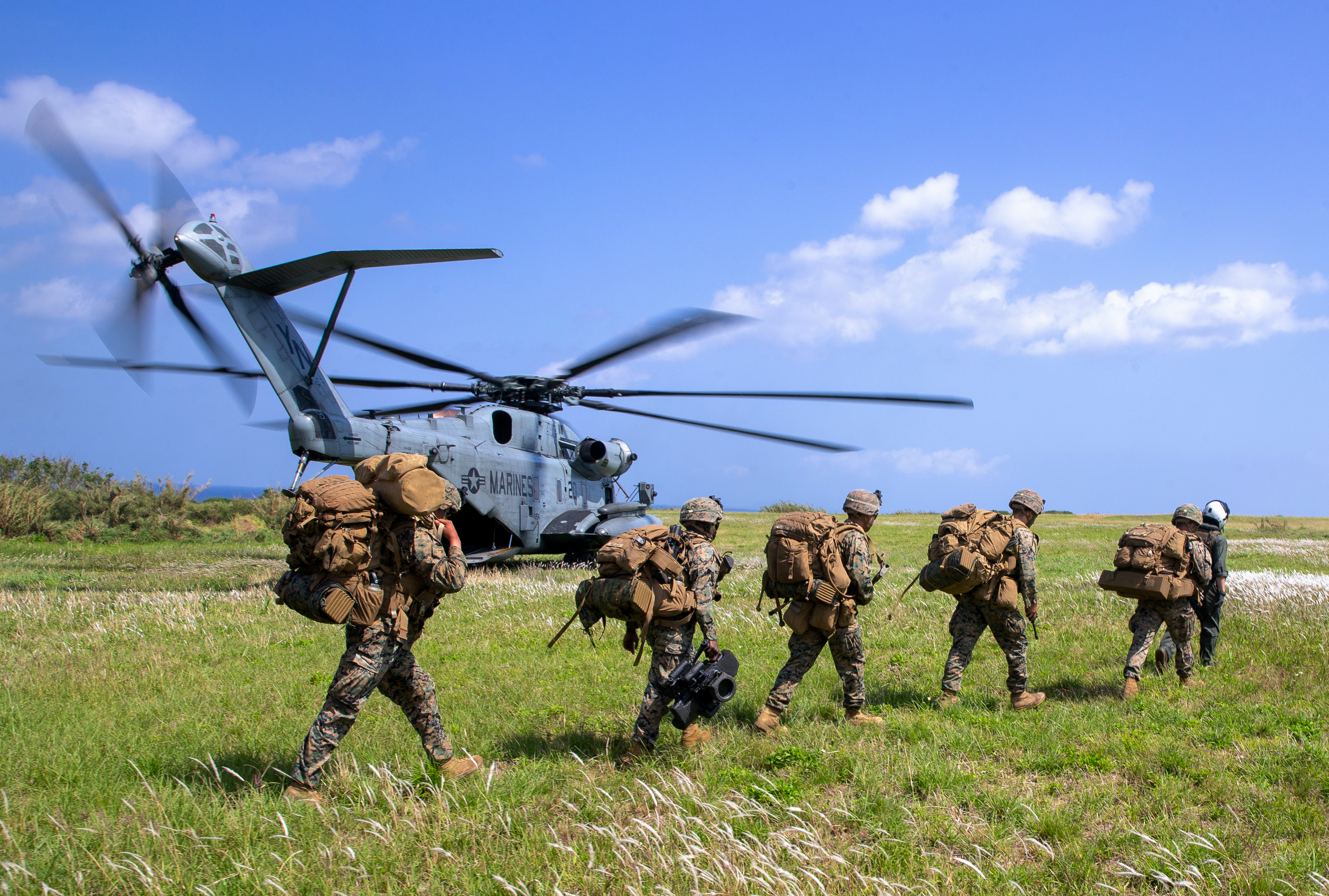
After honing naval integration and then exercising in the Indo-Pacific with the joint force, the Marine Corps is ready to take its new island-hopping campaign concept to the next level by drilling with international allies and partners.
The Marine Corps last month wrapped up two sprawling exercises in the region focused on Expeditionary Advanced Base Operations and plans to further test out the concept this summer with Australia during exercise Talisman Sabre.
“Over the next 12 months, my hope and goal is to see this command do the same thing we did recently, but to bring in our allies and partners,” Col. Mike Roach, the commanding officer of the 12th Marine Regiment, which falls under the Japan-based 3rd Marine Division, told USNI News in a recent interview. “My hope for the next one is to do this again on scale – so again over more islands, hopefully over large distance, but with allies next time.”
Last month, the Marine Corps – along with the Army, Navy, Air Force and U.S. Space Command – participated in Spartan Fury and Castaway, exercises that took place across islands in Hawaii and Okinawa, Japan, respectively. Arleigh Burke-class destroyer USS Halsey (DDG-97) participated in the exercise from Hawaii. The drills focused on practicing Expeditionary Advanced Base Operations and simulating the future capabilities, platforms and formations the Marine Corps envisions using during a potential island campaign in the Pacific against a country like China.
Roach described Castaway and Spartan Fury as “a joint Marine Corps exercise that experimented how you would command and control and operate and sustain a distributed force in a maritime environment” across two islands in Okinawa and three islands in Hawaii.
“And what we did … is basically grab the Marine artillery unit, supported by all the elements of a Marine Air-Ground Task Force – so we had elements of the aviation community, logistics community, infantry units, and information operation, Marine information units – and they all came together distributed on five islands,” Roach told USNI News.
While last year the Marine Corps concentrated on increased integration with the Navy, including the staffs of III Marine Expeditionary Force and U.S. 7th Fleet, the recent exercises helped the Marine Corps and Navy work with other parts of the joint force ahead of future training with nations in the region.
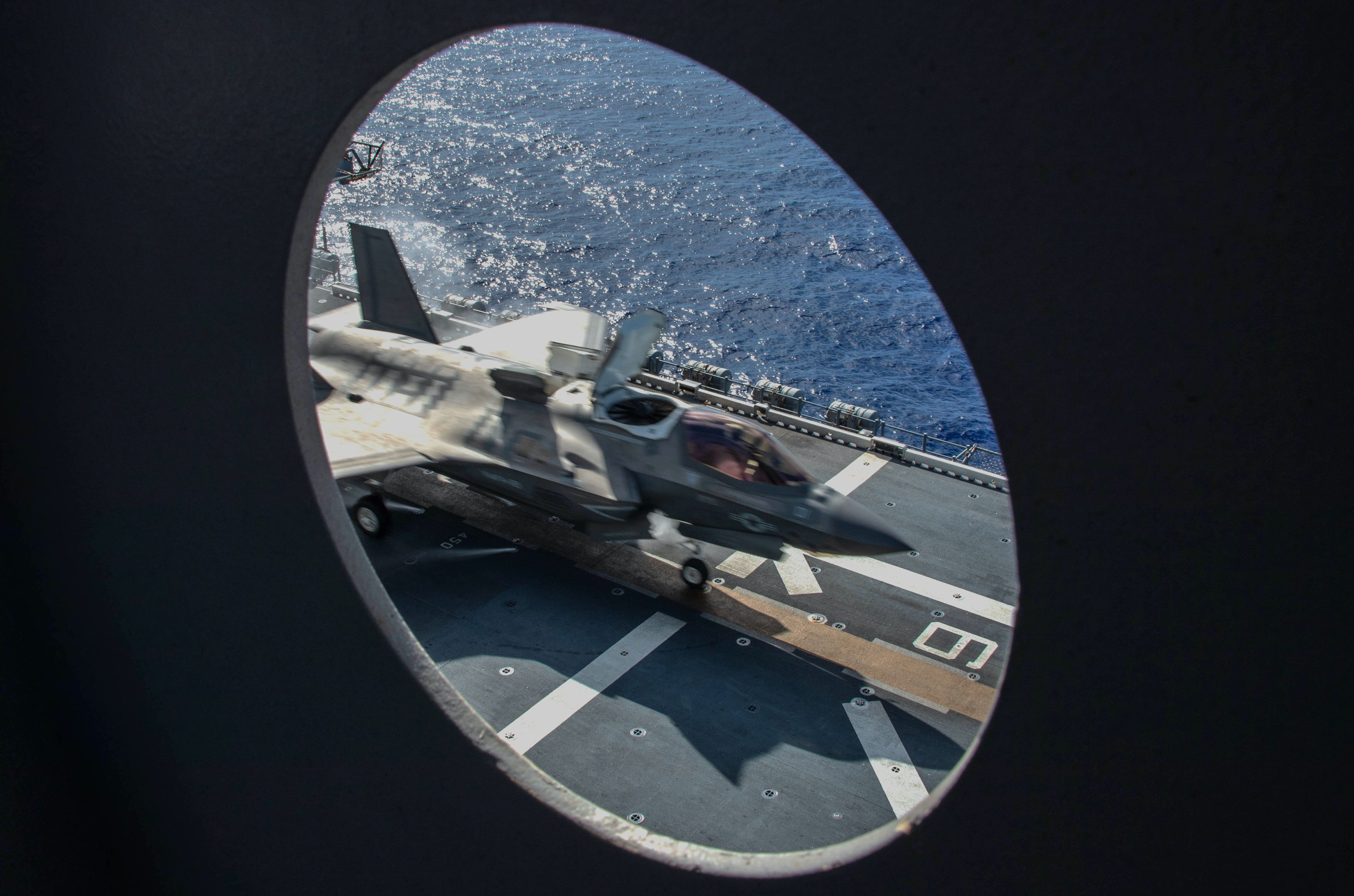
“The one thing that we didn’t do in both these exercises in Hawaii and Okinawa is we didn’t have our allies and partners integrated. What I hope to see in the future is more of that. I think we need to really get all our ducks in a row and a better understanding of how we would do that,” Roach said. “And I think in the past two years I’ve been in command, we’ve done that. So now what we want to try to do is open the aperture to bring in our allies and partners because they’re very excited about these concepts and I think also appreciate the need to operate this way in this current environment.”
During Castaway and Spartan Fury, the Marine Corps simulated elements of the Marine Littoral Regiment, a new formation the service plans to begin standing up next fiscal year.
The MLR – and the EABO concept – are part of the Marine Corps’ overall force design, an initiative aimed at shedding heavier equipment the service used during land wars in the Middle East and shifting to lighter and more mobile capabilities Marines can use to move around expeditionary bases on islands in the Pacific as they work in conjunction with the Navy’s fleet. Officials have emphasized a need for this shift as the Pentagon recalculates its strategy away from ground wars in the Middle East and toward a fight in a maritime theater like the Pacific.
The Marine Corps recently unveiled its tentative manual for EABO, a document the service says will be iterative as the fleet performs experimentation and provides feedback.
“So every time [III MEF Commanding General Lt. Gen. Stacy] Clardy goes to the field, whether it be to an exercise with the Thais or with the Filipinos or with the Australians – or honestly as we live and work daily with the Japanese on mainland Japan in the prefecture of Okinawa – every single training opportunity is actually an experimentation opportunity,” Lt. Gen. Eric Smith, the deputy commandant for combat development and integration, told reporters during a roundtable last week. Smith was referencing the thousands of Marines in the region that live within the range of China’s weapons.
USNI News previously reported that the Marine Corps is considering three new MLRs for the Indo-Pacific region.
While the service is still fleshing out exactly what the MLR will look like, the unit is likely to have between 1,800 to 2,000 sailors and Marines and feature a Littoral Combat Team, a Littoral Anti-Air Battalion and a Littoral Logistics Battalion.
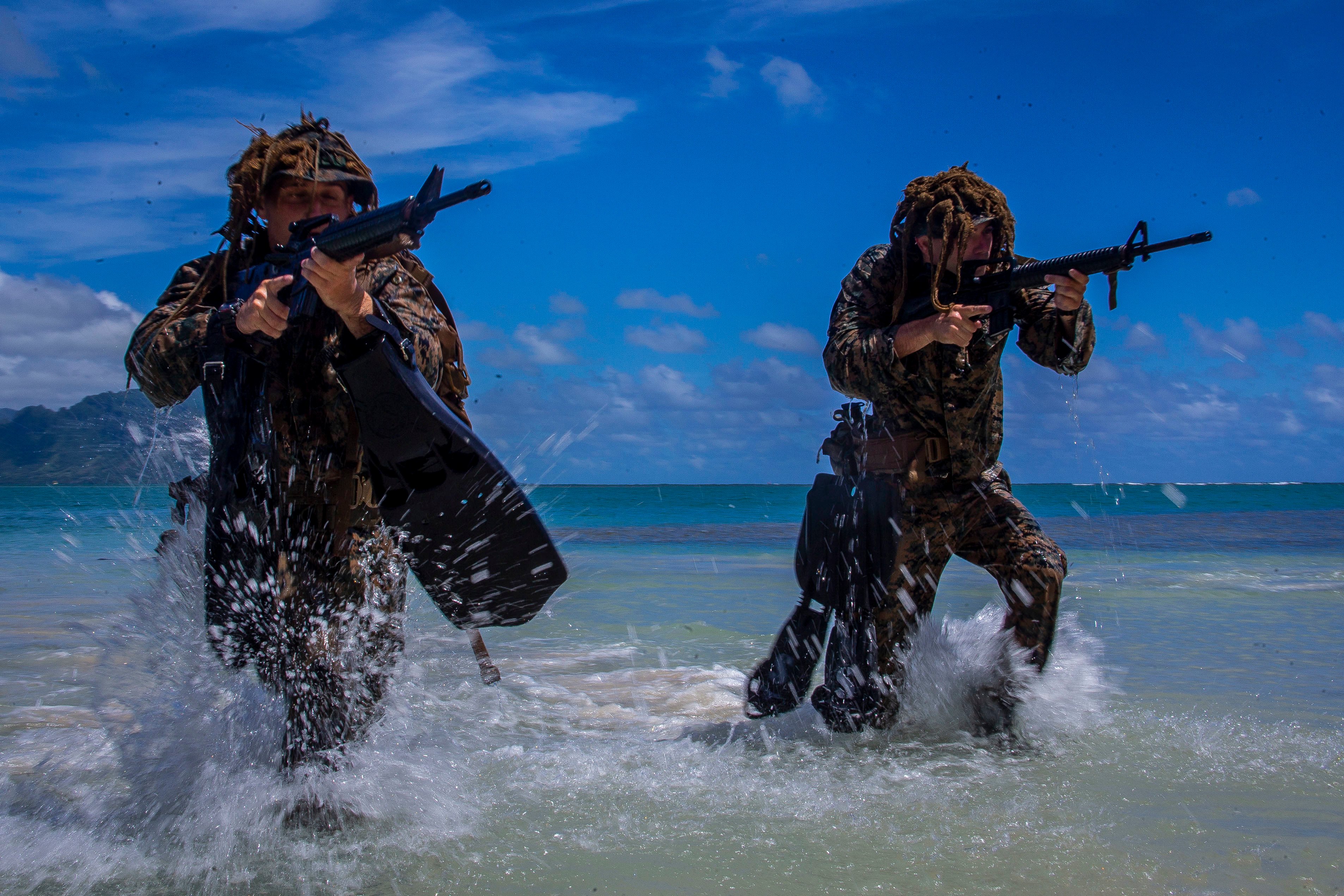
Roach, who led the recent exercises from Okinawa, said the recent simulation and experimentation is helping the Marine Corps determine the size of the various units that will fall under the new MLR formation.
“My headquarters was simulated as a Marine Littoral Regiment and the battalion in Hawaii and the battalion in Okinawa are simulated Littoral Combat Teams. And again, what we tried to do is just to better inform of what the size and what right looks like. And we looked at this through a particular lens for naval surface fires,” Roach said, pointing to the HIMARS rocket system as an example.
“So that was our focus. Obviously there can be [expeditionary advanced bases] that are focused more on logistics, focused on advanced arming or forward arming points. But that was the lens we looked through, but we did look through the lens of a Littoral combat Team,” he continued. “And we hope through our recent exercises – or what I would call competition operations – will better inform force design because there’s things they may develop in Quantico or in D.C. that we can better inform, maybe find things that were lacking or what would there need addition to to make those forces the right size, with more importantly the right capabilities.”
While the exercise simulated and experimented with the new formations for EABO, Roach said the Marine Corps sought to include as many parts of the traditional Marine Air-Ground Task Force as it could, including an air defense unit that operated from Ie Shima island near Okinawa.
“We did integrate low-altitude air defense. We did integrate logistics battalions into it. And again, we tried to do as much that would come out of those – some of those elements that would be within a Marine Littoral Regiment – but that [didn’t] necessarily always [exist] within a Marine infantry regiment, or even within a regimental combat team. And one of the things that we’ve not used before – or really integrated much within, at least at my level – is air defense,” Roach said.
“Air defense and air planning I think is going to be something that’s going to be important in the future,” he continued. “Having them integrated into the exercise is just going to help us understand their capabilities better and also, again, I think, inform what the right size of the future units should look like.”
In addition to testing out the formations to determine their correct size, the exercises also shed light on how the Navy and Marine Corps could fulfill some EABO missions before new platforms like the Light Amphibious Warship (LAW) and the long-range unmanned surface vessel (LRUSV) come online.
Roach pointed to the Army’s logistics support vessels, which the joint force used in last month’s exercise, as a short-term solution.
“These are the kind of vessels that we know the Navy and Marine Corps are looking at for what’s called naval connectors, but those don’t exist yet,” he said. “So what we found is there are opportunities to leverage what’s in the current operating environment – or current[ly] at our disposal. So that would go through leveraging contract vessels with the civilian community or government community, leveraging, like I said, the Army vessels.”
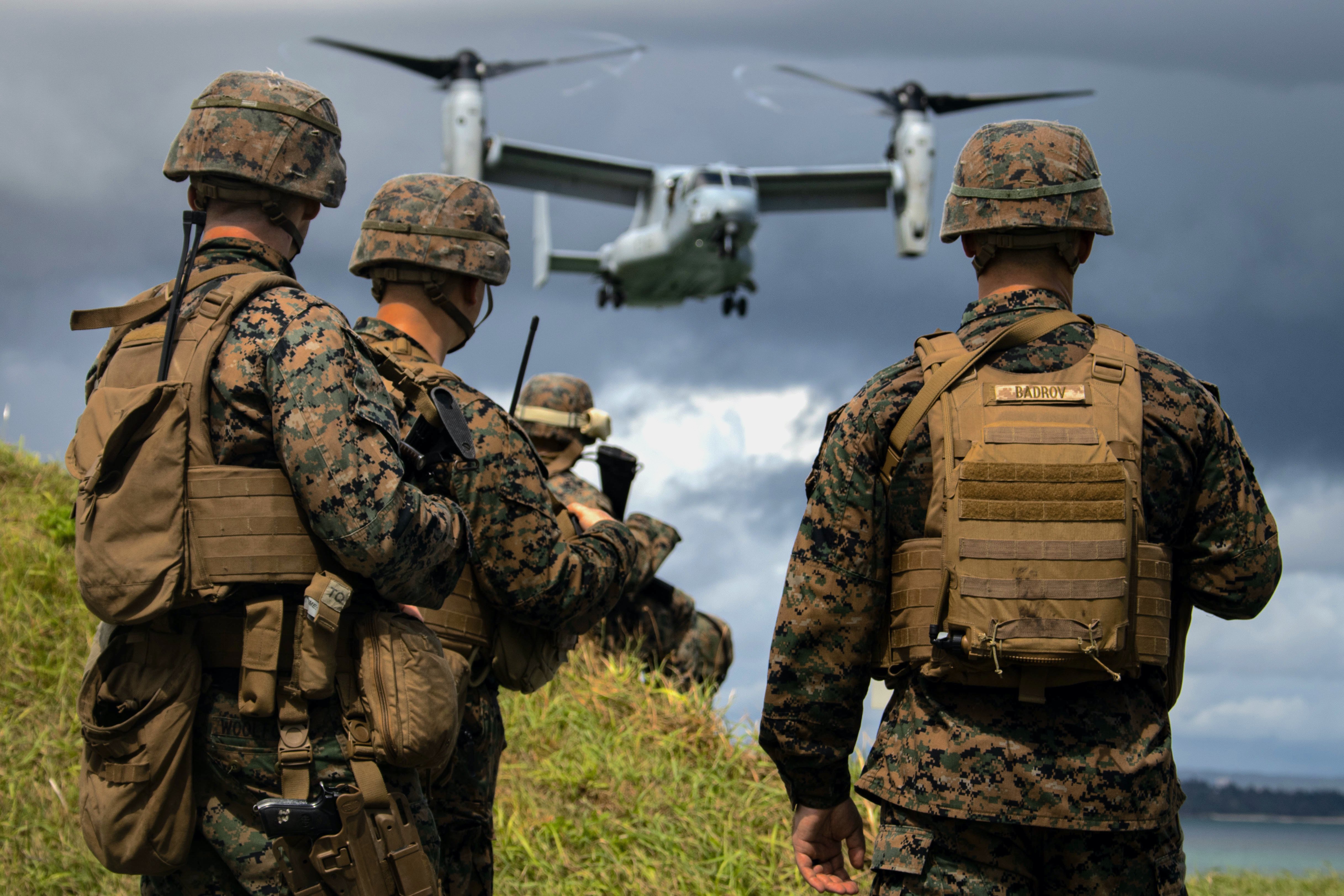
While the LRUSVs and LAWs don’t yet exist, Roach said the exercises helped show where the joint force could employ the platforms. For example, the Marines could use the LRUSV for surveillance and reconnaissance because its smaller size may mean it’s less detectable to an adversary compared to a bigger ship.
“So even though we didn’t have LRUSVs, we certainly leveraged the resources we had to simulate how we would utilize them. So it’s certainly going to be a platform that we look forward to working with in the future. And in regards to the LAWs, or the Light-weight Amphibious Warships, we certainly see a greater need for those in the future for sustainability and mobility,” he said.
“You know, we see the water just like the ground – it’s maneuver space. But to maneuver, you need the vessel. And as you know, aircraft are limited in what they can and cannot do. You know, having a resource like the LAWs that’s persistent and a large number of them would give us greater flexibility to maintain mobility, because the keyword in EABO is – it’s expeditionary,” Roach continued. “It’s not an advanced naval base, it’s an expeditionary advanced base. And the keyword expeditionary is meaning that you can, you know, move quickly. I mean, our mobility is going to be our survivability in the future.”





